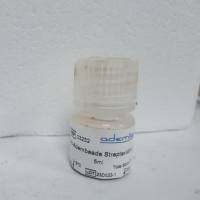Covalent Immobilization of Enzymes to Graphitic Particles
互联网
互联网
相关产品推荐

磁珠500nm magnetic particles for easy covalent fixation (5%)
¥6330

///蛋白Virus-Like Particles (VLPs) isotype control重组蛋白/蛋白
¥804

Recombinant-Pectobacterium-carotovorum-subsp-carotovorum-Type-II-secretion-system-protein-LoutLType II secretion system protein L; T2SS protein L Alternative name(s): General secretion pathway protein L Pectic enzymes secretion protein OutL
¥12558

磁珠Magnetic particles of 500nm - (NH2) functionality for covalent fixation 1% sc
¥3583

磁珠Magnetic particles of 500nm - (COOH) functionality for covalent fixation 5% sc
¥4363

